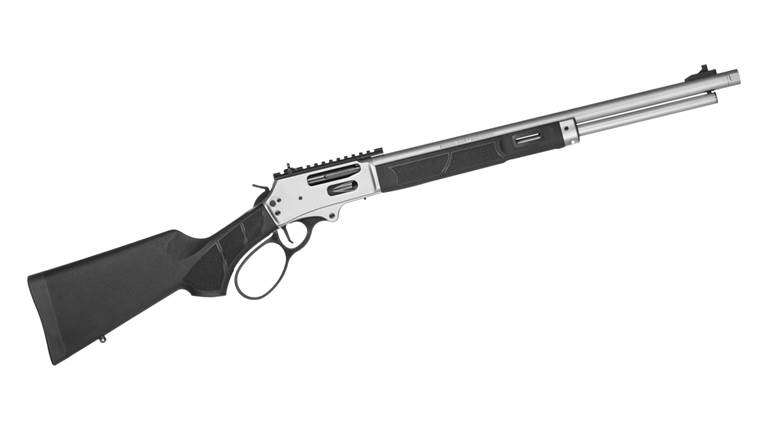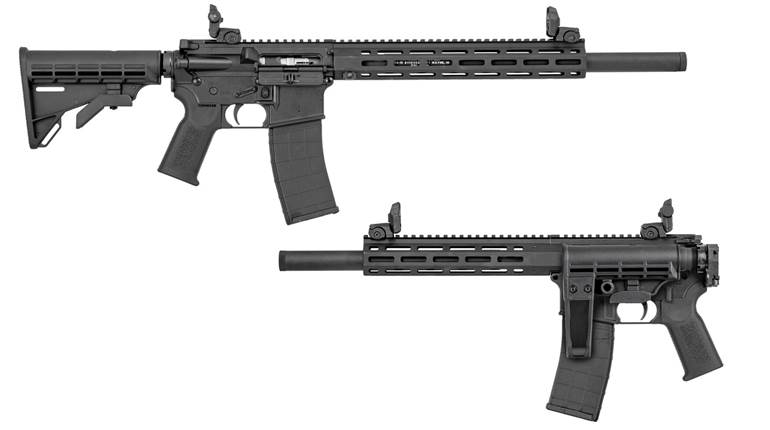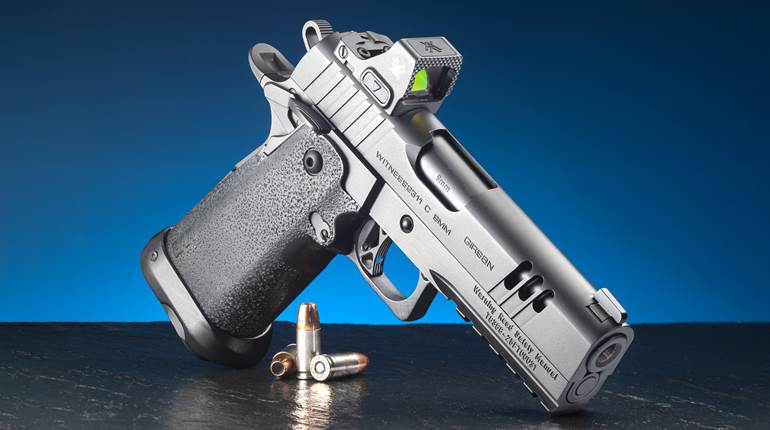Springfield Armory’s Saint has arrived, and for the first time an AR-15-style carbine is wearing the company’s iconic crossed-cannons and flaming bomb. For some, the Saint may be long overdue, after all, an AR platform would have been a welcome addition to Springfield’s catalog of M1A rifles, M1911-style pistols and the extensive XD line of polymer-framed handguns. But I say better late than never, and after some extensive testing with the Saint, I’d add that Springfield Armory’s first AR was worth the wait. (See more in the "NRA First" video above.)
At first blush, the Saint is a handsome carbine but, being an AR, it’s not particularly distinct. That said, some of the small decisions made by the designers do set the rifle apart and add value for potential consumers. The Saint has a 16” barrel rifled with a 1:8” twist and it has a Melonite protective finish, an effective alternative to chrome-lining the bore, and a savvy decision given the company’s experience with Melonite. The mid-length gas system uses the familiar A2-style front sight/gas block, including the bayonet lug. The handguard is a two-piece arrangement that, like the pistol grip and adjustable stock, is a product of Bravo Company USA, and makes use of the AR’s traditional delta ring for attachment. Interestingly, the trim, textured fore-end utilizes KeyMod attachment ports for the addition of accessories and rails. This is the first time I’ve seen KeyMod used on a polymer handguard, and it appears that Bravo Company reinforced the key-hole-shaped ports to prevent wear or wobble. I affixed a Surefire flashlight to my evaluation rifle and experienced no issues during a testing—so far the total round count is around 2,000 and the rail is still snug and secure.
More wise decisions were made for the Saint’s internal components. One such was the choice to nickel-boron coat the trigger components. The trigger is still a single-stage, G.I.-style system, but the coating definitely cleans up some of the grit commonly associated with stock AR triggers. As well, a nylon-tipped tensioning screw has been added just above the pistol grip. The screw is touted to reduce the movement between the upper and lower receivers, and therefore increase accuracy. Time will tell if the system is effective enough to earn widespread acceptance, but it’s nice to see innovation and creative thinking in this well-established category. A final feature worth mentioning is the heavy tungsten carbine buffer. The Saint is a fairly light production AR at 6 lbs., 11 ozs., so the heavier buffer was a smart addition intended to mitigate recoil. The result is a lightweight rifle that is also light on recoil, a combination that makes the Saint easy to carry and fun to shoot.
Overall, the Springfield Armory’s first foray into the AR market has yielded a platform that is light, trim, and well-equipped. There’s not a lot of differentiation to be had in today’s crowded AR market, but I think Springfield did a great job with the small details. In fact, when I first saw the gun I commented that if I were to build a $1,000 AR, it would look very similar to the Saint. Thankfully, with an MSRP of just under $900, I can save myself some effort, and some cash.
Specifications:
Chambering: 5.56x45 mm NATO (.223 Rem.)
Action Type: mid-length direct gas impingement, semi-automatic, center-fire rifle
Overall Length: 32.25” to 35.5”
Weight: 6 lbs., 11 oz.
Recievers: 7075 T6 Aluminum
Barrel: 16” Chrome Moly Vanadium, 1:8” RH twist rifling, Melonite finish
Trigger: single-stage, Nickel-Boron coated, 6-lb., 1-oz. pull
Sights: A2-style front post; low-profile, dual aperture flip-up rear
Stock: Bravo Company USA adjustable buttstock, pistol grip and handguard with KeyMod attachment points
Magazine: 30-round Magpul PMAG Gen M3 detachable box

























